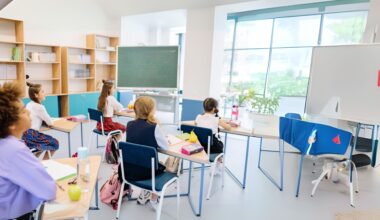The transition from high school to college, careers, and adult life is one of the most defining periods in a young person’s journey. With the right support, guidance, and mindset, students can make this leap confidently. That’s where Social Emotional Learning (SEL) plays a vital role. This blog explores how SEL helps students build the academic, emotional, and practical skills needed to thrive beyond high school, while also offering practical strategies for college readiness, career planning, and personal growth.
Why Social Emotional Learning Matters
Social Emotional Learning is more than a buzzword—it’s a research-backed approach to education that equips students with essential life skills. SEL helps students:
- Understand and manage emotions
- Set and achieve goals
- Show empathy for others
- Build positive relationships
- Make responsible decisions
These competencies are not just helpful in the classroom—they’re foundational for postsecondary education, career success, and lifelong well-being.
Exploring Academic Opportunities in High School
One of the best ways to prepare for life beyond high school is by engaging with the academic opportunities available right now. High schools often offer programs like:
- Advanced Placement (AP) courses
- Dual-enrollment classes
- Career and Technical Education (CTE) pathways
These opportunities help students earn college credits early, challenge themselves academically, and explore areas of interest. When students combine academic readiness with SEL skills like self-management and goal-setting, they become more confident and capable learners—ready to handle the pressures of postsecondary education.
Cultivating Essential Skills for the Future
Academic achievement is only part of the picture. Students also need a strong foundation of essential skills to thrive beyond high school. These include:
- Critical thinking
- Problem-solving
- Effective communication
- Time management
Social Emotional Learning helps students develop these skills by teaching them how to reflect on their learning, manage stress, work well with others, and adapt to change—traits that are crucial for success in both college and the workplace.
Building a Growth Mindset for Lifelong Learning
At the heart of SEL is the belief that intelligence and ability aren’t fixed—they can grow with effort and persistence. This is known as a growth mindset.
Students with a growth mindset:
- See mistakes as learning opportunities
- Stay motivated during challenges
- Believe their efforts can lead to improvement
By embracing a growth mindset, students learn to navigate setbacks with resilience. They become more open to feedback and more likely to pursue goals that push their boundaries. This mindset is key for college readiness, where independence and self-motivation are essential.
Discovering Passions and Career Pathways
High school is also a time to explore what excites you. Whether it’s science, music, social justice, or entrepreneurship, discovering your passions and interests is the first step toward a fulfilling future.
SEL supports this exploration by encouraging self-awareness—helping students understand their strengths, values, and what motivates them. Once students understand themselves better, they’re in a stronger position to:
- Choose relevant educational pathways
- Explore meaningful career options
- Set long-term personal and professional goals
This type of intentional planning is essential for career readiness and personal fulfillment.
College and Career Planning: What to Know
To make the most of life after high school, students need to start early with college and career planning. Here are a few strategies that work:
1. Understand College Admission Requirements
Each college has its own criteria, but most look at:
- GPA and class rank
- Standardized test scores (SAT, ACT)
- Extracurricular involvement
- Personal essays
With clear goals and the SEL skill of responsible decision-making, students can plan their high school years to meet these requirements.
2. Explore Diverse Career Options
Not every student will attend a four-year university—and that’s okay. There are many fulfilling options, including:
- Community colleges
- Apprenticeships
- Trade schools
- Entrepreneurial paths
SEL helps students stay open-minded, ask questions, and make informed choices that align with their strengths and interests.
3. Plan for Postsecondary Success
Postsecondary education requires more than academic ability. Students must also navigate new environments, advocate for themselves, and manage responsibilities. SEL prepares students for this with skills like:
- Emotional regulation
- Seeking support when needed
- Setting priorities and managing time
Combined with academic planning, these competencies help students transition into adult life smoothly.
Unleashing Potential Through Personal Growth
High school is a launching pad for personal transformation. Through SEL, students gain the confidence to define their values, express themselves clearly, and make choices that reflect their authentic selves.
This personal growth leads to:
- Increased motivation
- Higher levels of academic engagement
- Stronger interpersonal relationships
- A clearer sense of purpose
When students feel empowered, they’re more likely to stay engaged in school and less likely to disengage or drop out. That’s why student success depends not just on curriculum, but on how well we support their emotional and social development.
How Families and Educators Can Help
Supporting students on this journey requires a team effort. Here are some ways adults can encourage growth:
For Educators:
- Integrate SEL into daily instruction
- Offer college and career exploration activities
- Foster inclusive, supportive classroom environments
For Families:
- Talk openly about future plans and emotions
- Help students reflect on their strengths
- Celebrate progress, not just outcomes
When students feel supported by the adults around them, they’re more likely to take healthy risks and pursue challenging goals.
Conclusion: You’re More Ready Than You Think
The future may seem uncertain—but with the right tools, you’re more ready than you think. By developing a strong academic foundation, embracing Social Emotional Learning, and planning with intention, you can face whatever comes after high school with confidence.
Whether you pursue college, a trade, or something entirely unique, your college and career readiness journey starts with self-discovery, personal growth, and a belief in your ability to succeed.
So ask yourself: What kind of life do I want to build? And remember—there’s no one “right” path. With SEL as your guide, the path you choose will be the one that fits you best.



